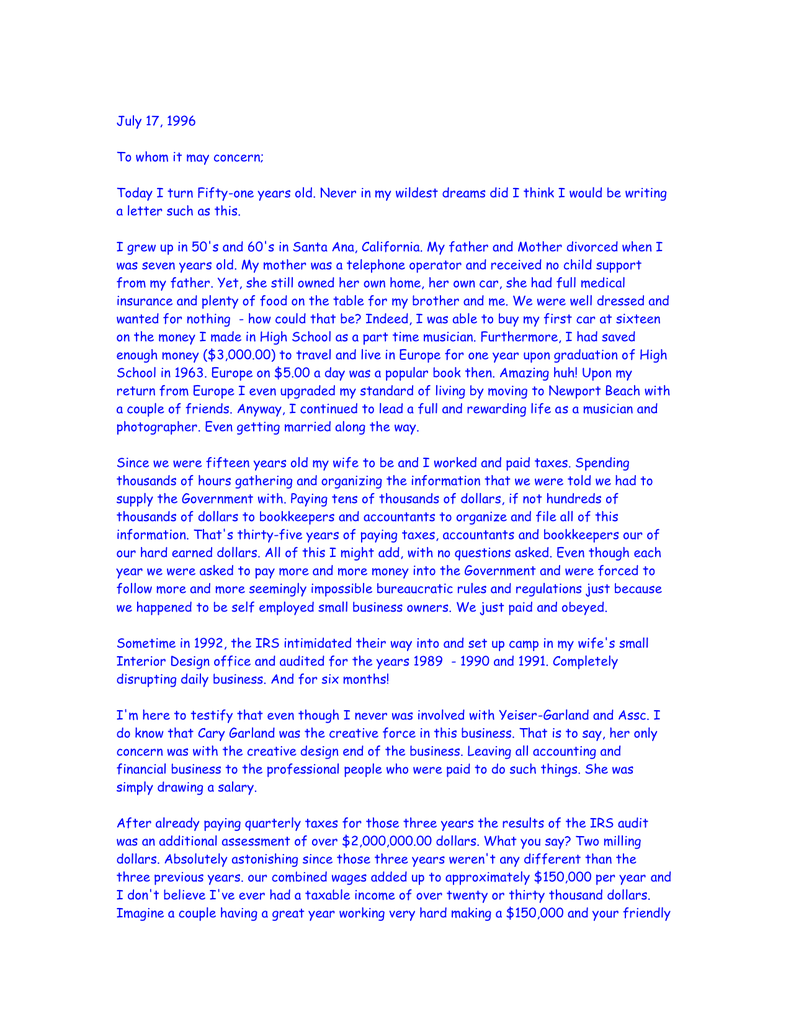

- #Other ways to say to whom it may concern how to
- #Other ways to say to whom it may concern professional
#Other ways to say to whom it may concern professional
The use of this phrase in professional communication has reduced with the increased popularity of the internet. Why do people use the phrase “To Whom It May Concern”?
#Other ways to say to whom it may concern how to
How to write a To Whom It May Concern letter – example. When is it right to use 'To Whom It May Concern'. Steps to take before using ‘To Whom It May Concern'. When should you use "To Whom It May Concern. 
Why do people use the phrase “To Whom It May Concern”?.Read on to learn about the situations where it is okay to use this generic greeting and find out some better alternatives that you can use to address your letters. It can be difficult to understand when to use “To Whom It May Concern” to address your letter. A common way of addressing professional letters in the past was, “To Whom It May Concern.” It is a broad greeting that can be used when the name or title of the recipient is unknown such as contacting a new client or applying for a job. Without a proper greeting, the letter may seem incomplete and impolite. View an additional sample cover letter in the Teacher Education Résumé, Cover Letter & Reference Guide (PDF).Any business correspondence has to have the right salutation. If submitting your material electronically, either include your electronic signature or type “submitted electronically” under your typed name. If mailing in a hard copy, sign your name in the open space.
 Phone number/email and best way to contact you.Įnd your cover letter professionally (e.g. State your appreciation of the employer’s consideration. Reiterate your interest in the position. The purpose of this paragraph is to wrap up your letter. This will be the biggest part of your letter and may be one or two paragraphs. Give concrete examples of the skills you listed in the first paragraph. The purpose of this paragraph is to emphasize what you can contribute to the organization. End this paragraph with three qualifications/skills demonstrating why you are the most qualified candidate. Indicate the source of referral, if any. State the reason you are writing the letter, identifying the position you are applying for or inquiring about. Include company information found through research. The purpose of this paragraph is to gain and keep the reader’s attention. Call for the name of the hiring manager if not listed, unless the job description says “Please no phone calls.” Never use “To Whom It May Concern.” If a name is unavailable, use a title (e.g., Dear Administrator). SalutationĪddress your cover letter to a specific person, if possible. Next, reflect on your own qualifications and skills and select three that most closely fit the requirements of the position and/or the needs of the school and district. Vary your sentence structure.īefore writing, first research information about the job and the school so you can address key points and needs related to the position, school and district. Structure: Do not overuse the pronoun “I” at the beginning of sentences. Format: Use the same heading, font style and size, and type of paper as your résumé. Length: A cover letter is typically 3-4 paragraphs, not exceeding one page. It is a chance to sell how your unique skills and experiences can benefit the district/organization.
Phone number/email and best way to contact you.Įnd your cover letter professionally (e.g. State your appreciation of the employer’s consideration. Reiterate your interest in the position. The purpose of this paragraph is to wrap up your letter. This will be the biggest part of your letter and may be one or two paragraphs. Give concrete examples of the skills you listed in the first paragraph. The purpose of this paragraph is to emphasize what you can contribute to the organization. End this paragraph with three qualifications/skills demonstrating why you are the most qualified candidate. Indicate the source of referral, if any. State the reason you are writing the letter, identifying the position you are applying for or inquiring about. Include company information found through research. The purpose of this paragraph is to gain and keep the reader’s attention. Call for the name of the hiring manager if not listed, unless the job description says “Please no phone calls.” Never use “To Whom It May Concern.” If a name is unavailable, use a title (e.g., Dear Administrator). SalutationĪddress your cover letter to a specific person, if possible. Next, reflect on your own qualifications and skills and select three that most closely fit the requirements of the position and/or the needs of the school and district. Vary your sentence structure.īefore writing, first research information about the job and the school so you can address key points and needs related to the position, school and district. Structure: Do not overuse the pronoun “I” at the beginning of sentences. Format: Use the same heading, font style and size, and type of paper as your résumé. Length: A cover letter is typically 3-4 paragraphs, not exceeding one page. It is a chance to sell how your unique skills and experiences can benefit the district/organization. 
The purpose of a cover letter is to persuade the reader you are worth an interview. A cover letter is a professional letter that “covers” or accompanies your résumé.








 0 kommentar(er)
0 kommentar(er)
